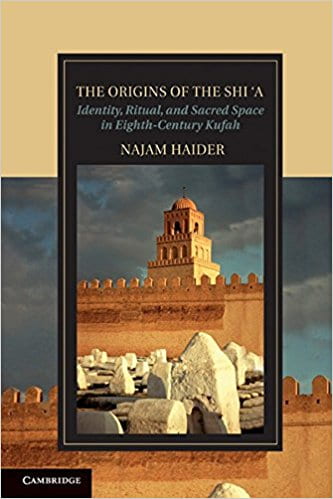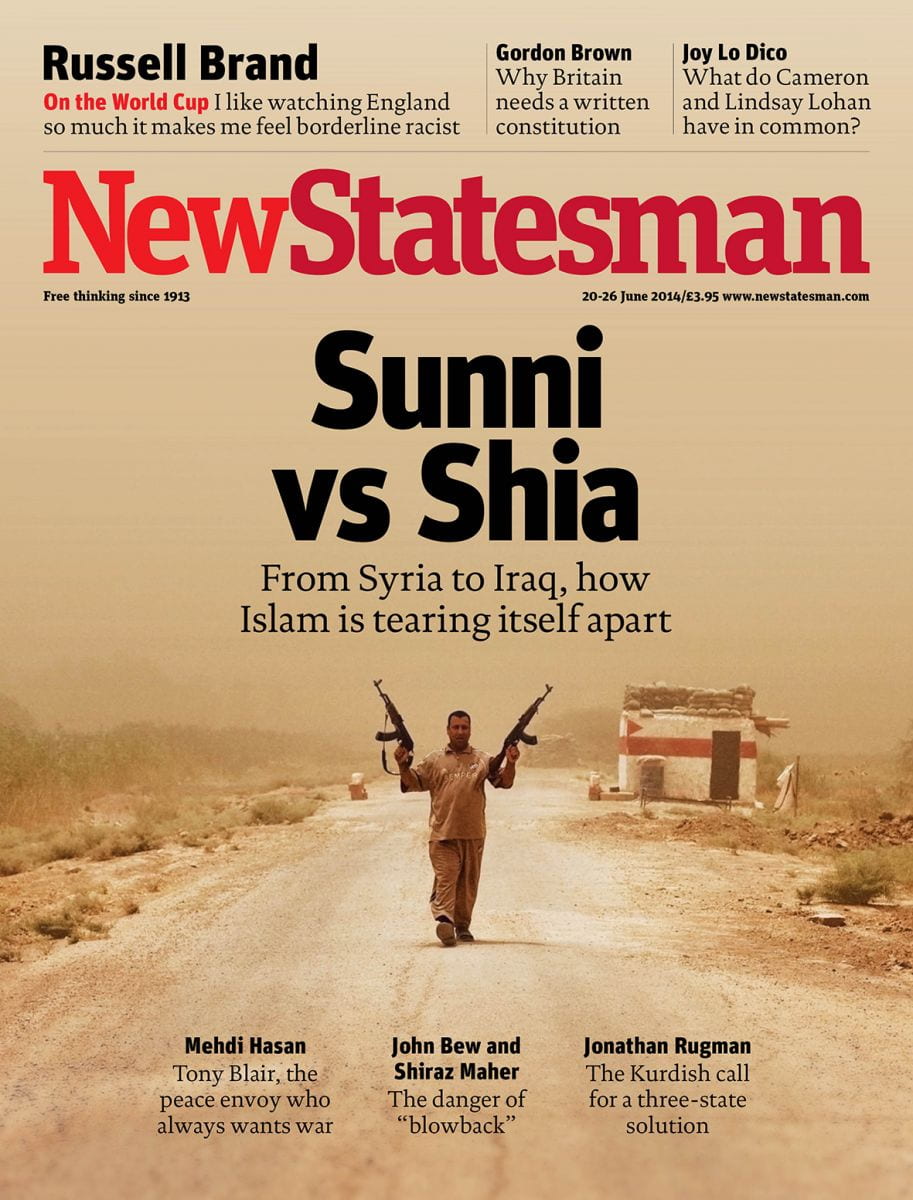by guest contributor Basma N. Radwan
Consider two vastly different versions of the same course “Introduction to Islamic Civilization.” In the first, an emphasis of political factors in Islamic group formation supersedes all other considerations. Shias, even before their inception as a distinct, self-identified group, are described as a uniquely political Islamic sect. In such analyses, theological, economic, and ethnic considerations are peripheral, if they at all constitute factors. To make the group intelligible to students predominantly acquainted with the history of the west, an instructor might offer a historical parallel to the French Legitimist tradition. The comparison’s extended implications render Orléanists out of the nonrelative Sahābah, Bonapartists out of Khawarīj, and neo-orientalists out of a fresh generation of young scholars.
In the second, interdisciplinary approaches can offer a different take. Beginning with the Covenant of Medina and a discussion on the nature of identity, course instructors can prompt students to ask themselves the following: when reading the history of Islam and its many groups, has modern scholarship excessively privileged objective over subjective identity? Do we identify early Islamic groups through our own contemporary dichotomies? Anyone who opens a newspaper will realize that it is hard to dispute that this is not the case. No doubt, contemporary political events parade the dichotomy as the fundamental operative in the history of the Middle East. The central idea (a well-intentioned one, I think) is an earnest attempt to discern some of the otherwise camouflaged nuances of contemporary politics. So be it—journalists, diplomats, and human rights groups use the dichotomy because it offers intelligible explanations for otherwise complex socio-political phenomena. But how useful is the chasm pedagogically? Even instructors who disagree with the claim that Sunni versus Shia is an overly simplistic heuristic must, nonetheless, consider what political and strategic purposes such a binary has come to serve.
Still, I would like to suggest that the Sunni versus Shia chasm, though useful in some scholarly endeavors, is of little value as a primary framework for the study of Islamic history. Those who plan to make use of it might consider the three following pedagogical drawbacks. First, privileging the Sunni-Shia dichotomy as the main framework for the study of Islamic history allots students little opportunity to discuss either tradition’s subgroups. Second, because the Sunni-Shia dichotomy is depicted as the product of a politico-theological dispute, economic, tribal, and geographical factors in group formation are easily overlooked. Third, the dichotomy inevitably runs the risk of “modern ideologies masquerading as historical truths.” Depicting a geopolitical rivalry between Iran and Saudi Arabia as the climax of a fourteen-hundred-year religious struggle is not far off from labeling Operation Iraqi Freedom as an extension of medieval crusades. Such grandiose historical ornamentations are highly caloric, yet offer little nutritional value—no matter how forcefully U.S. presidents, Iranian Ayatollahs, or Saudi Monarchs may have tried to persuade otherwise. So, what is to be done?
The importance of self-identification in the history of Islamic group formation suggests, according to one theory, that historians should reconsider and reexamine sources that provide clues to the group’s subjective identity. A group’s subjective identity is “how [they] conceive themselves to be, whereas [their] objective identity is how [they] might be viewed independently of how [they] view [themselves]” (p. 5). In this sense, it would be historically brute to claim that Ali was Shia. While he is labeled so retrospectively, his subjective identity could not be accounted for in those terms, as “the Sunni-Shia schism only materialized a century [after the prophet’s death]” (p. i). Even the use of proto-Shia or proto-Sunni as indicators of subjective identity proves problematic. These kinds of qualifications are, to borrow one historian’s description of Muslim heresiographies, “simply back-projections intended to validate subsequent political and theological developments” (p. 249).
There is also the question of what happens when a non-dominant group’s identification is rejected by a dominant one. Although a Sufi group may consider itself Sunni or Shia, in its legal affiliation for example, prominent orthodox Sunni or Shia groups may reject its claim. In a historical narrative in which the Sunni-Shia chasm dominates, Sufi groups are characterized by their objective identity, as dictated by the dominant group, as non-Shia/Sunni. By extension, there is the added risk of underappreciating the role of non-dominant groups’ subjective identity in the making of Sunni/Shia orthodoxy. In other words, we are blind to the process wherein Sunni and Shia define themselves not against one another, but rather through other “Others.”
But what about when a group’s subjective identity is non-Shia/Sunni? This dichotomy, as a heuristic, risks erasing the historical presence of groups whose subjective identity lies entirely outside of it: the early Khawarij, Murji’a, Ibāddiya and, more recently, the Aḥmadiyya and NOI . In these instances, it is the absence of Sunni-Shia elements in their subjective identity that places them in historical margins, resulting in a narrative dictated by dominant groups.
While renewed emphasis on subjective identity in Islamic group formation can soften an otherwise rigid dichotomy, it cannot, on its own, provide the reasons for differences in objective and subjective identity. Because the Sunni/Shia dichotomy is presented primarily as a politico-theological chasm, the impact of geographical, tribal, and economic factors in group formation is sidelined. The Kharijites (Khawarij), sometimes referred to as the first distinct sect in Islamic history, are one such example. Emerging in the aftermath of the Battle of Siffin (657), the name refers to the members of Ali’s troops who rejected his decision to negotiate with Mu’awiyah’s supporters. Derived from the Arabic word ‘Khawarij,’ seceders, Kharijite came to signify anyone who “left” Ali’s camp. Most historical narratives attribute the Kharijite secession to a theological dispute—namely their view that Ali’s acquiescence to negotiate with Mu’awiyah’s supporters was a violation of divine will.
Recent scholarship has signaled a shift from the theological interpretation, suggesting that the Kharjites’ secession is attributable to their Tamim tribal composition. The influence of Tamim tribal affiliation in the origins and development of the Kharijite led one historian to describe it as “a movement of democratic ideals that advocated a militant democracy [against an aristocratic Ummayad counterpart]” (p. 34). The group is as an example of how theological differences, while important, may at times be compromised, and at others corroborated, by tribal affiliations. The Sunni-Shia heuristic is inclined to overemphasize theological considerations or attribute them as a cause to non-theological divisions. Even within the category of Khairijite itself, a confluence of geographical, tribal, and economic factors eventually led to the creation of further subdivisions. According to one historian, Muslim heresiographers had accounted for four original Kharijite groups, “Azariqa, Najadat, Ibadiyya, and Suffriya” (p. 77). This double divergence is significant as an instance wherein tribal considerations supersede the theological and political factors are offset by their economic counterparts. The study of such groups, whose origins and development cannot be expounded by a simplified dichotomy or modern political terminology on their own, promises a more holistic account of the history of Islamic civilization.

Najam Haider Origins of the Shi’a: Identity, Ritual and Sacred Space in Eighth-Century Kufa (Cambridge, Cambridge University Press: 2011)
The paucity of historical sources may be one explanation for why the Sunni-Shia chasm dominates literatures on the history of Islam—it proves convenient to otherwise source-less historians. Recently, the more innovative have found ways to remedy the source scarcity. In Origins of the Shia, Najam Haider shows how sources which may appear ahistorical at first glance can in fact elucidate elements of subjective identity—providing new insights on the history of Islamic groups. By drawing from innovations in “textual archaeology… [Haider is able] to identify traditions and views concerning specific ritual practices among jamā’ī-Sunnī, Zaydī, and Imāmī scholars in the early eight century Kufa (modern day Najaf)” (p. 1395). Haider’s method is nothing less than revolutionary in its pedagogical implications. For one, his rich and complex narrative, produced by emphasizing the role of ritual as one way to discern the consolidation of a group’s subjective identity, stands in stark contrast to histories crafted exclusively with reference to objective identities. Second, the work shows that when the Sunni-Shia binary framework is employed with reference to anachronistic formulations of politics, historians miss fundamental aspects of group formation. Accordingly, instructors of Islamic Civilization should be weary of investigating the fragmentation of the early Islamic community in sole reference to the political or theological.
In effect, the third pedagogical drawback—the risk of “modern ideologies masquerading as historical truths”—is already minimized when the former two are remedied. Distinguishing objective from subjective identity produces a fuller understanding of how and why dominant and non-dominant groups form and decidedly dispels a faux-history of dominant group rivalry. Using Sunni v. Shia as the ultimate explanatory signifier in the history of Islam produces a perpetual enmity that is, as one observer put it, “misguided at best and disingenuous at worst.” As a historical explanatory, it is reductionist. Used as a social scientific predictor, it is dangerous.
Sunni and Shia theological differences do have an important place in Islamic history. Of course, this is partially because this history is still being written: contested along the borders of modern nation-states, fought in violent armed struggle and frequently redefined by geo-political developments. But this phase of Islamic history is no longer, strictly speaking, “Islamic.” Transpiring in circumstances unintelligible in terms of regional or religious isolation, these events are part and parcel of globalization, neoliberalism, and post-colonial nationalism— anything but the climax of a fourteen-hundred-year theological dispute. There is little warrant to look at eighth century Kufa for these events’ origins—no more, anyways, than there is for young scholars to expect a rich history of Islamic civilization through the prism of an exaggerated historical enmity.
Basma N. Radwan is a doctoral student in the Department of Middle Eastern, South Asian and African Studies and the Institute for Comparative Literature and Society at Columbia University. Her interests include the history of political thought and the impact of colonialism in the making of modernity. She is currently writing about notions of racial difference in the work of Alexis de Tocqueville.




1 Pingback